As an Amazon Associate KitchenwareSets.com earns from qualifying purchases.
11 Genius Kitchen Island Ideas For Style And Function
Is your kitchen feeling a little… disconnected? Perhaps you sense a missing piece, a void where warmth, connection, and effortless functionality should be. It’s a common dilemma, especially in today’s open-concept homes where the kitchen isn’t just for cooking, but for living.
Many homeowners struggle with kitchens that feel less like the heart of the home and more like a collection of separate zones. You might be craving more counter space, better organization, or a natural gathering spot where family and friends can truly connect while you cook. Without a central hub, the flow can feel awkward, and your culinary adventures might be more of a logistical challenge than a joyful experience.
A well-designed kitchen island is the ultimate solution, transforming your space into a versatile hub that provides essential workspace, smart storage, and a welcoming social area, elevating both the utility and aesthetic appeal of your home.
Is Your Kitchen Missing Its Centerpiece? Here’s How to Find the Perfect Island
Every truly great kitchen needs a focal point, a place where practicality meets personality. For many, that essential element is the kitchen island. Far from being just an extra countertop, a thoughtfully designed kitchen island acts as a multi-functional powerhouse, seamlessly blending form and function to become the true heart of your home. It’s where meals are prepped, homework is done, and countless conversations unfold over a cup of coffee.
Updated for 2024, we’ve synthesized insights from top interior designers and analyzed hundreds of kitchen layouts to bring you ideas that are both beautiful and practical. From sleek, modern statements to charming, rustic additions, we’re about to dive into 11 genius, actionable ideas that will guide you in finding the perfect kitchen island to fit your personal style and functional needs.
Before You Start: The 3 Golden Rules of Kitchen Island Design
Before you dive headfirst into the exciting world of kitchen island designs, it’s crucial to lay a solid foundation. Skipping these fundamental principles can lead to a beautiful but ultimately dysfunctional space. The top 3 rules for kitchen islands are: 1) Ensure at least 36-42 inches of clearance on all sides for traffic flow. 2) Keep the island’s size proportionate, ideally no more than 10% of the kitchen’s total square footage. 3) Position the island so it doesn’t obstruct the work triangle between the sink, stove, and refrigerator.
These guidelines are backed by National Kitchen & Bath Association (NKBA) standards and are crucial for creating a kitchen that’s not only beautiful but also safe and efficient to work in.
- Respect the Clearance (The 36-42 Inch Rule): This is non-negotiable. You need adequate space around your island for comfortable movement, opening appliance doors, and easy traffic flow. A minimum of 36 inches on all sides is essential, but 42 inches is ideal for high-traffic areas or if you have multiple cooks in the kitchen. In my experience, skimping on this clearance is the biggest mistake people make, leading to constant frustration.
- Perfect the Proportions (The 10% Rule): Your island shouldn’t overwhelm your kitchen. A good rule of thumb is that the island should occupy no more than 10% of your kitchen’s total square footage. This ensures the island feels proportionate to the room. For instance, in a 10×10 foot (100 sq ft) kitchen, your island should be around 10 sq ft. Visual balance is key to a harmonious design.
- Optimize the Workflow (Don’t Block the Work Triangle): The “work triangle” (the path between your refrigerator, sink, and stove) is vital for kitchen efficiency. Your island should enhance this workflow, not hinder it. Avoid placing the island in a way that forces you to walk around it excessively to move between these three critical points. A well-placed island can actually create a more efficient work triangle by housing one of these elements (like a prep sink or cooktop).
11 Genius Kitchen Island Ideas For A Stylish & Functional Space in 2024
Ready to be inspired? Your kitchen island is an opportunity to make a strong design statement while maximizing functionality. Whether you’re aiming for a sleek, minimalist vibe, a cozy, inviting feel, or the ultimate organizational hub, there’s an island idea waiting to transform your space.
This curated collection features trending designs from leading interior designers and real-home renovations, showcasing the best in both aesthetics and practical application. We’ll explore everything from modern statements to space-saving solutions, complete with how-to steps and pro-tips to help you achieve the look.
1. The Modern Waterfall Edge
A waterfall kitchen island features a countertop that extends vertically down the sides of the island, creating a seamless, continuous flow from the top surface to the floor, epitomizing modern, minimalist elegance. This design is a hallmark of contemporary kitchens, offering a sleek and luxurious aesthetic. It’s particularly striking with materials like quartz, marble, or granite where the veining can create a dramatic, unbroken pattern.
Materials Needed:
* Continuous slab of countertop material (e.g., quartz, marble, granite)
* High-strength construction adhesive
* Substrate/cabinetry base
* Professional fabrication tools
Step-by-Step Directions:
1. Consult a Pro: This high-end look requires precise cuts and expert handling. Hire a reputable stone fabricator to measure your space and create a template for the exact dimensions.
2. Select Your Slab: Choose a single, large slab of your desired material with continuous veining. This is crucial for the most dramatic, seamless effect where the pattern appears to “flow” down the side.
3. Fabrication: The fabricator will expertly cut the stone with a 45-degree mitered edge where the horizontal top meets the vertical side panel. This precise angle creates the illusion of a single folded piece of stone.
4. Professional Installation: The cut pieces are then carefully bonded on-site using specialized epoxy. The seam is meticulously polished to make it virtually invisible, resulting in that coveted monolithic look.
Pro-Tip: When selecting your slab, ask the fabricator to map out the cuts to ensure the veining “wraps” convincingly from the top down the side. This detail separates a good installation from a truly great one, maximizing the visual impact of your chosen stone.
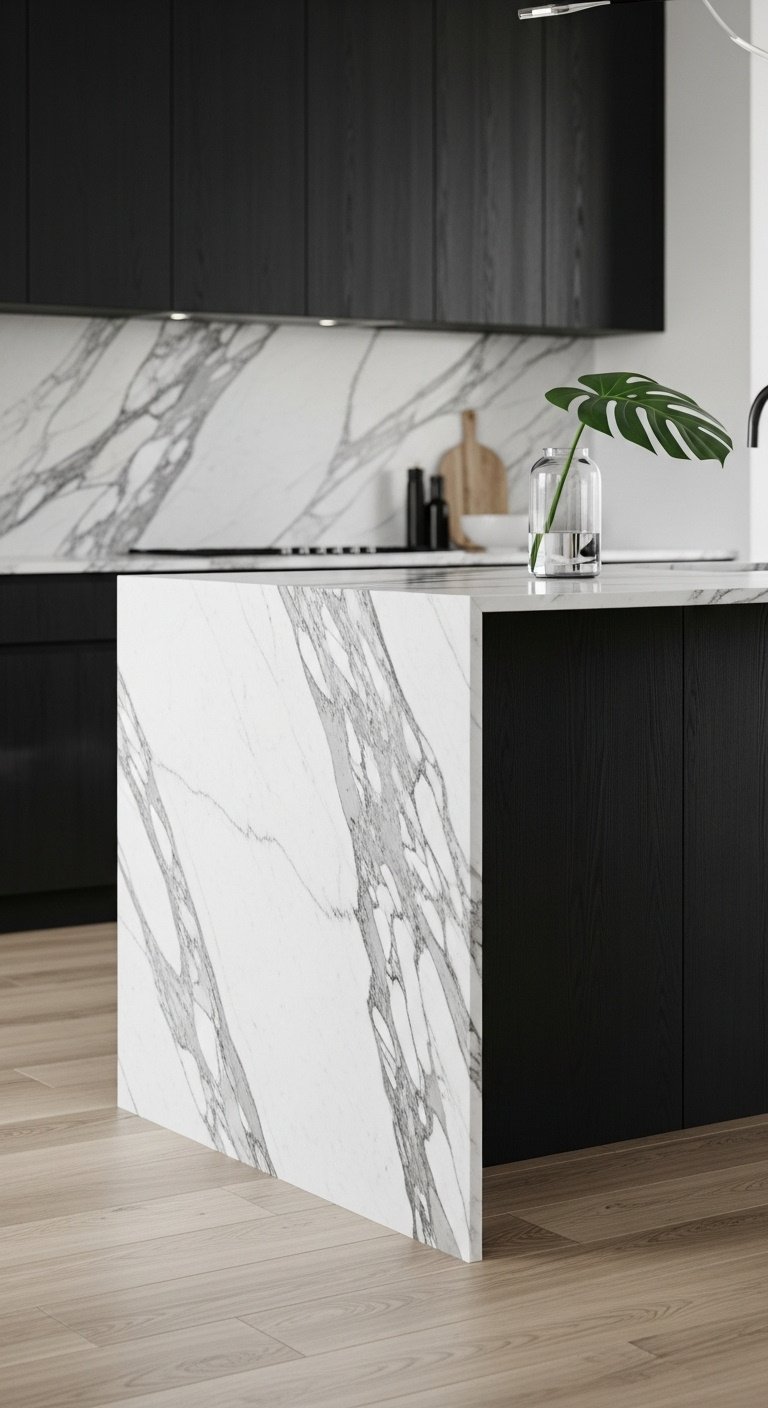
Pin this sleek design to your ‘Dream Kitchen’ board!
2. The Elegant Fluted Island
An elegant fluted island features vertical, rounded grooves (flutes) or reeded wood panels applied to its base, adding rich texture, architectural interest, and a custom, high-end feel to the kitchen. This design choice brings a sophisticated touch, reminiscent of classic architectural details, yet it can be seamlessly integrated into both traditional and modern kitchen aesthetics. It’s a fantastic way to elevate a standard island into a custom-looking piece.
Materials Needed:
* Pole wrap or half-round dowels (available at home improvement stores)
* Strong wood glue
* Pin nailer (with appropriate length pins)
* Wood filler
* Primer
* Paint or stain of choice
* Measuring tape, saw (for dowels if not using wrap)
Step-by-Step Directions:
1. Measure and Cut: Carefully measure the height and width of each side of the island you intend to cover with fluting. If using individual dowels, cut them precisely to the required height. Pole wrap can be cut to width with a utility knife.
2. Apply Adhesive: Apply a generous, even amount of strong wood glue to the back of the pole wrap or each individual dowel. Ensure full coverage for a secure bond.
3. Attach to Island: Press the fluted pieces firmly onto the island’s surface. Take your time to ensure they are perfectly vertical, aligned, and tightly butted against each other (if using individual dowels) for a seamless appearance.
4. Secure and Finish: Use a pin nailer to secure the pieces in place while the glue dries. This prevents movement and ensures a strong hold. Once dry, fill any visible nail holes with wood filler, sand the surface smooth, then prime and paint or stain to match your kitchen’s color scheme.
Lesson Learned: For a truly professional finish, always apply a dedicated primer coat before painting, even if using a paint-and-primer-in-one product. The textured nature of fluting can cause paint to absorb unevenly, and a solid primer coat creates an ideal, uniform base, preventing splotches and ensuring a smooth, even color.
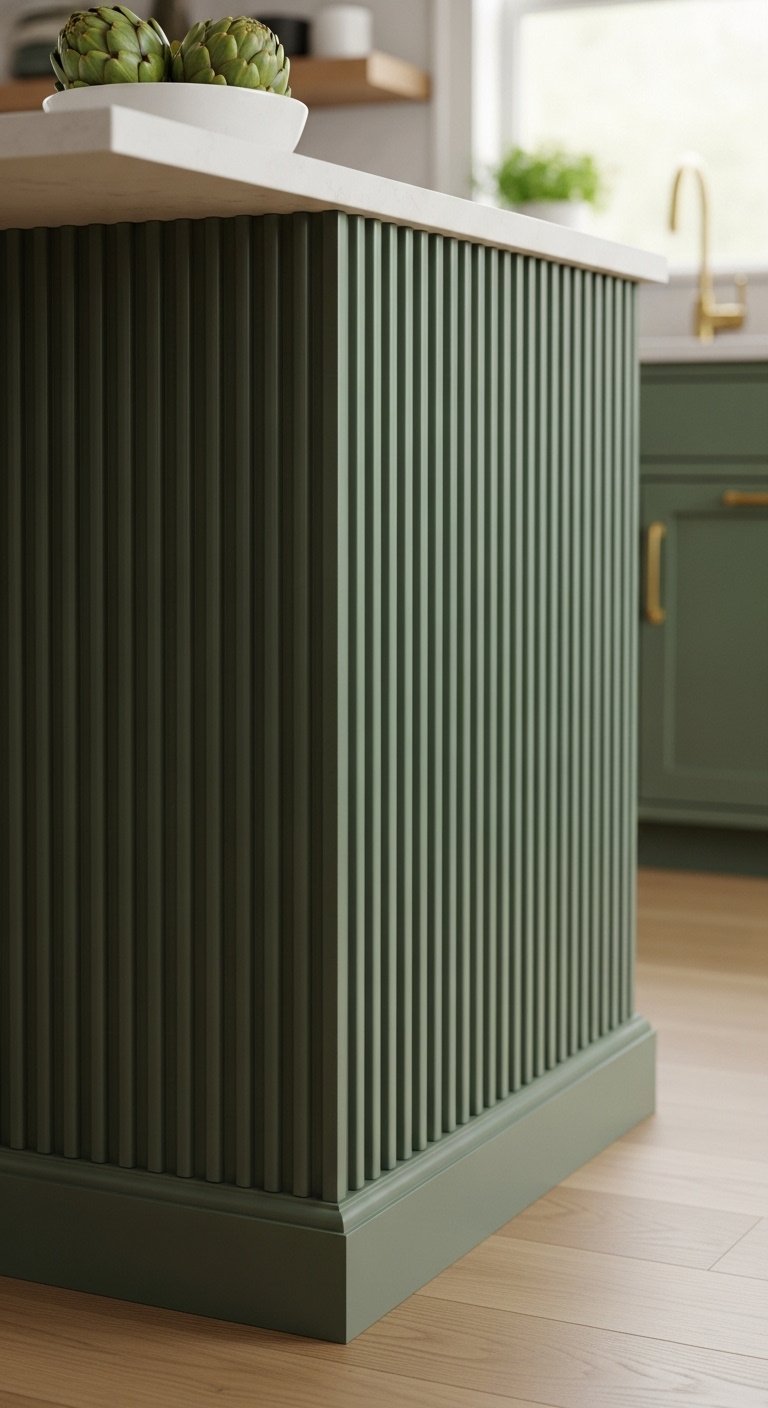
Love this texture? Save it to your ‘Kitchen Details’ board!
3. The Statement Lighting Centerpiece
Statement lighting over a kitchen island transforms the island from a mere workspace into a dramatic focal point, enhancing both task functionality and the overall ambiance of the kitchen with bold, decorative fixtures. Beyond providing essential illumination for meal prep and dining, well-chosen pendant lights or chandeliers can introduce architectural interest, color, and personality, defining the island’s presence in the room.
Materials Needed:
* Chosen pendant lights or chandelier
* Mounting hardware (usually included with fixtures)
* Electrical wiring (often existing, but may need extending)
* Junction box (if not already present or needs relocation)
* Wire stripper, voltage tester, screwdriver
* Ladder (for safe access)
* (Note: Professional electrical installation is highly recommended for safety and compliance.)
Step-by-Step Directions:
1. Determine Placement: For multiple pendants, space them evenly along the island’s centerline. A common spacing is 24-30 inches apart from the center of one fixture to the next, ensuring balanced illumination across the entire surface.
2. Set the Height: Hang fixtures so the bottom is 30-36 inches above the countertop. This crucial height provides effective task lighting without obstructing sightlines across the island or hitting heads. Adjust slightly based on fixture size and ceiling height.
3. Choose the Right Scale: The size of your lighting should complement your island. A large, expansive island can beautifully support a single, dramatic chandelier or a row of three (or more) substantial pendants. A smaller or more compact island generally looks best with two smaller, well-proportioned pendants.
4. Install Safely: ALWAYS turn off the power to the kitchen at the main breaker before starting any electrical work. Follow the manufacturer’s detailed instructions for connecting the wiring and mounting the fixtures. For peace of mind, and to ensure safety and adherence to local electrical codes, it’s wise to hire a certified electrician.
Pro-Tip: Always install a dimmer switch for your island lighting. This simple upgrade allows you incredible flexibility, letting you switch between bright, focused task lighting for intricate meal prep and soft, ambient light for entertaining guests or enjoying a relaxed evening meal. It’s a game-changer for creating the perfect mood.
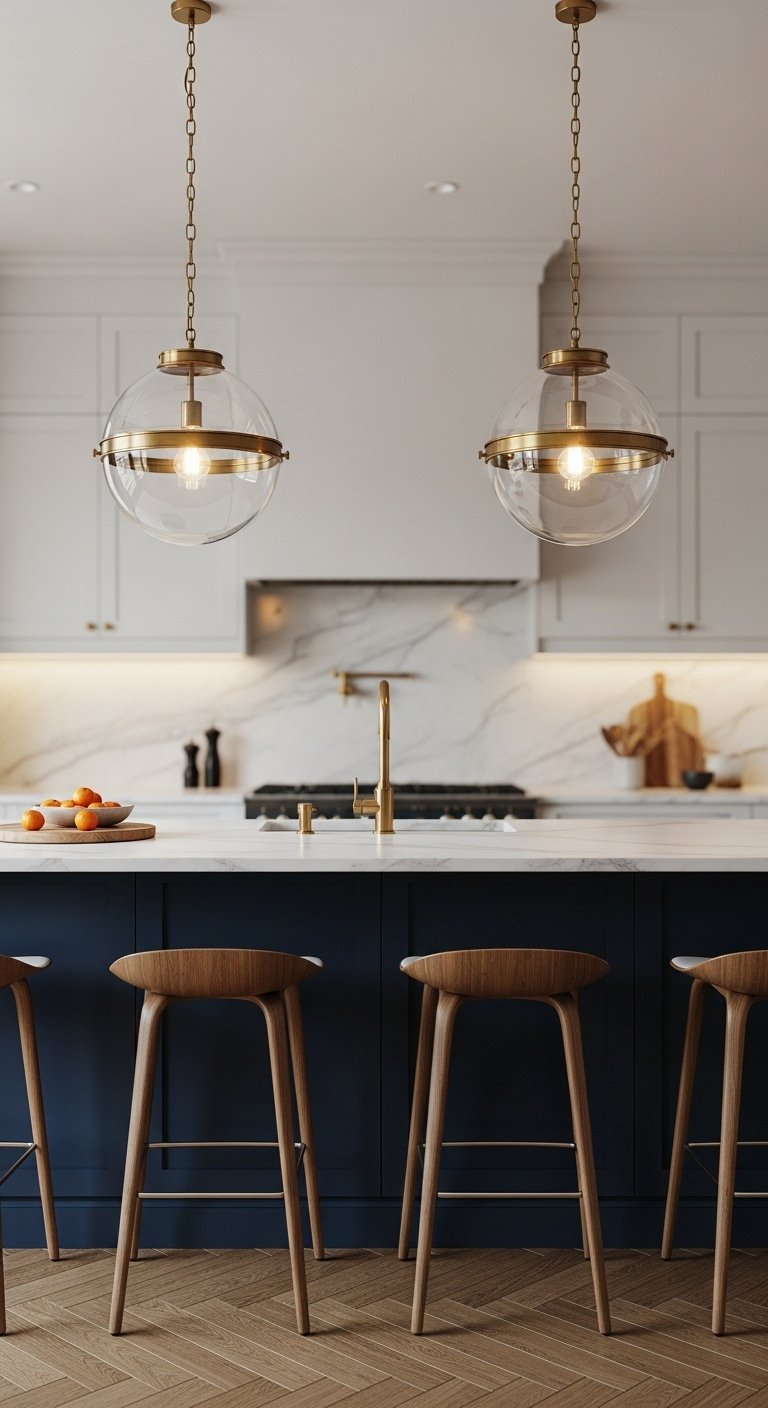
Light up your life! Pin this look to your ‘Home Lighting’ board.
4. The Multi-Level Hybrid
A multi-level hybrid kitchen island features two distinct tiers, typically a standard counter-height surface for food preparation and a raised, bar-height section for casual dining or socializing, creating functional zones within a single footprint. This ingenious design offers the best of both worlds, allowing for efficient cooking tasks while simultaneously providing a dedicated, comfortable space for guests or family members to gather without interfering with the chef.
Materials Needed:
* Cabinetry for the island base
* Countertop material for the lower prep level (e.g., quartz, granite)
* Contrasting or matching material for the upper bar-height level (e.g., reclaimed wood, butcher block, a different stone)
* Robust support brackets or a pony wall for the raised tier
Step-by-Step Directions:
1. Define Zones: Begin by planning the island with a standard 36-inch high counter for the main food preparation area. This is the ergonomic height for chopping, mixing, and often where a sink or cooktop might be located.
2. Design the Raised Tier: Plan the second, upper level at a comfortable bar height, typically around 42 inches. This tier is specifically for seating and offers the added benefit of concealing any prep clutter from the view of an adjacent dining or living area in an open-concept space.
3. Choose Contrasting Materials: To visually distinguish the two zones and add aesthetic interest, consider using different materials. A durable, easy-to-clean material like quartz or granite works beautifully for the lower prep area, while a warmer material such as a thick butcher block or character-filled reclaimed wood can be stunning for the raised bar.
4. Ensure Proper Support: The raised tier requires robust and secure support. This can be achieved through custom-fabricated steel brackets that are securely anchored, or by integrating a sturdy pony wall directly into the island’s construction to ensure complete stability and safety.
Lesson Learned: When designing a multi-level island, ensure the depth of the bar-height overhang is at least 12-15 inches. This seemingly small detail is critical for providing comfortable legroom for those seated at the island, preventing cramped knees and making the space genuinely inviting for extended use.
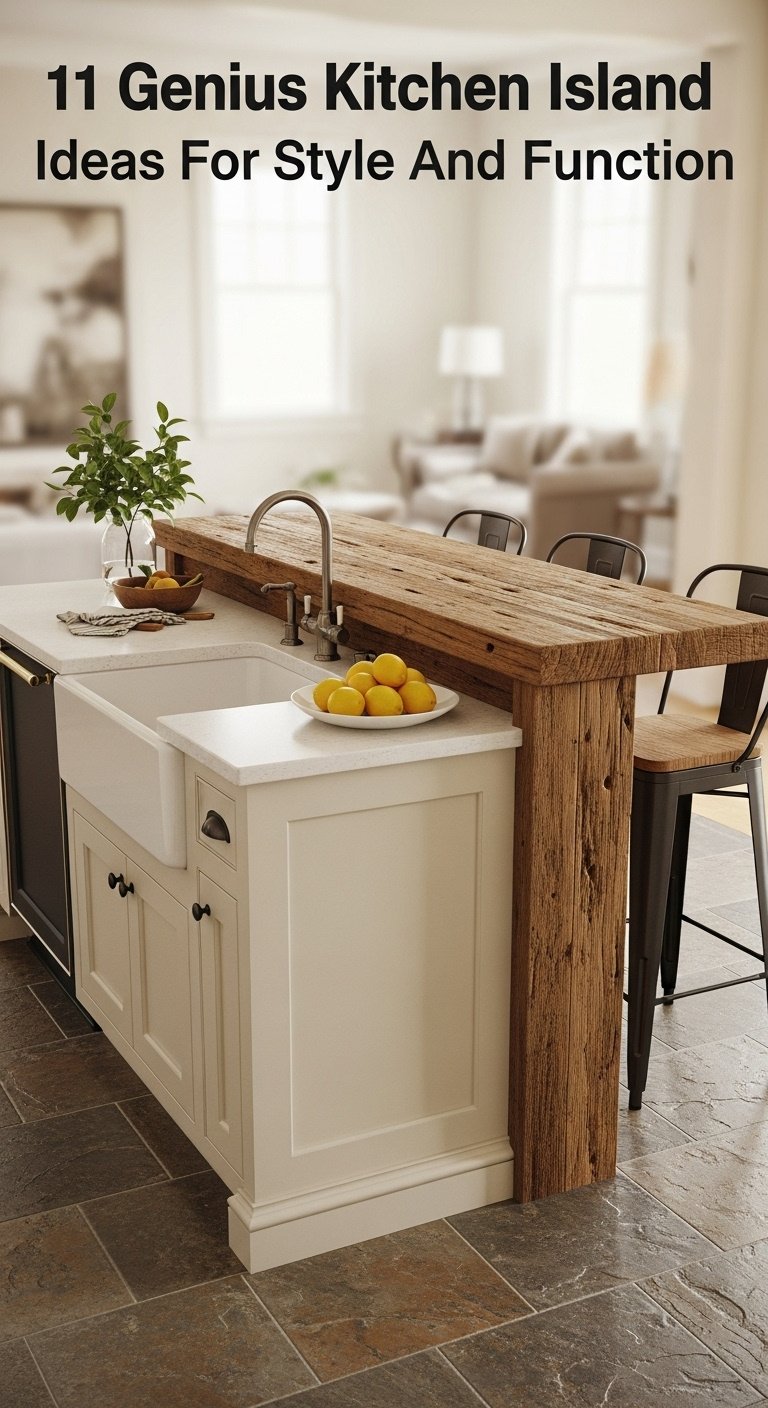
Get the best of both worlds! Save this idea to your ‘Functional Kitchen’ board.
5. The Integrated Appliance Powerhouse
An integrated appliance powerhouse kitchen island seamlessly incorporates major appliances such as cooktops, sinks, microwave drawers, or wine coolers, optimizing kitchen workflow and maximizing functionality within a compact, central footprint. This design transforms the island into a highly efficient zone for cooking, prepping, and entertaining, minimizing unnecessary movement and streamlining culinary tasks.
Materials Needed:
* Chosen appliance (e.g., microwave drawer, wine fridge, cooktop)
* Custom cabinetry designed to fit exact appliance specifications
* Electrical wiring/outlets (appropriate for appliance voltage)
* Plumbing lines (if installing a sink or dishwasher)
* Ventilation system (essential for cooktops)
Step-by-Step Directions:
1. Plan Utilities First: This is the most critical and least flexible step. Before any island construction begins, work closely with a certified electrician and plumber to accurately plan and run all necessary electrical lines, outlets, and plumbing to the precise location of your future island. Changes later are costly and difficult.
2. Select Compact, Island-Friendly Appliances: Choose appliances specifically designed for island integration. Excellent options include sleek microwave drawers that tuck away neatly, under-counter beverage fridges or wine coolers, or compact dishwashers that blend seamlessly with cabinetry.
3. Plan for Ventilation (Crucial for Cooktops): If you’re incorporating a cooktop into your island, a robust ventilation system is absolutely non-negotiable. Options include downdraft systems that retract into the island when not in use, or a striking statement range hood installed overhead.
4. Custom Cabinetry: To achieve that desirable seamless, built-in look, order custom cabinetry that features precise cutouts and dimensions based on the specific appliance manufacturer’s specifications. This ensures a perfect fit and a polished finish.
Pro-Tip: A microwave drawer installed directly in an island is a true game-changer for both ergonomics and aesthetics. It keeps the appliance off valuable main counter space, creating a cleaner look, and its lower placement makes it safer and more accessible for children to use independently.
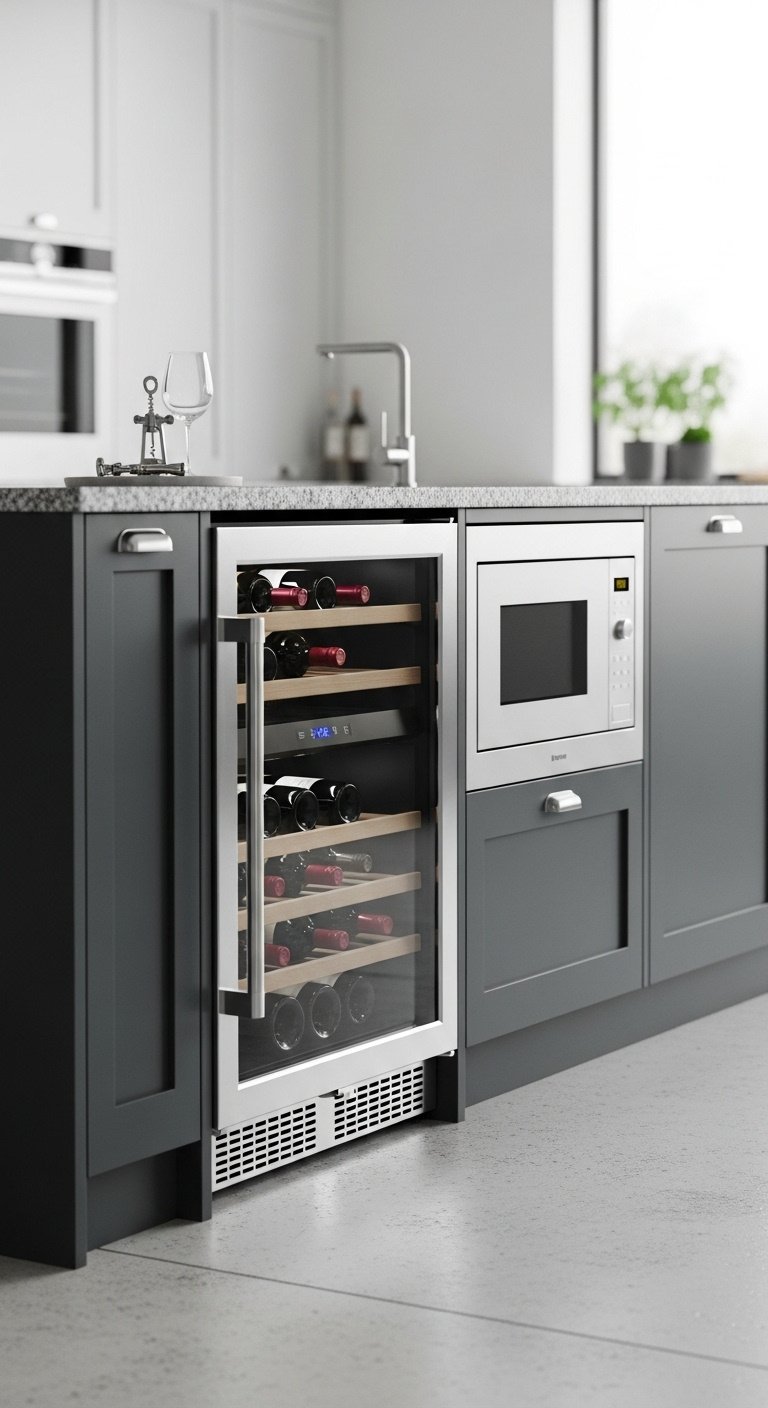
Want more function? Pin this powerful idea to your ‘Kitchen Remodel’ board!
6. The Ultimate Storage Hub
The ultimate storage hub kitchen island is meticulously designed to maximize every inch of space, incorporating a variety of concealed and display storage solutions like deep drawers, pull-outs, and open shelving to keep the kitchen organized and clutter-free. This design prioritizes efficiency, ensuring that cookware, dishware, pantry items, and small appliances all have a dedicated, easily accessible home.
Materials Needed:
* Custom-designed cabinetry for the island
* Various drawer organizers (e.g., for cutlery, spices, plates)
* Specialized pull-out mechanisms (for trash and recycling bins, pantry items)
* Open shelving units (for display or accessible storage)
Step-by-Step Directions:
1. Analyze Your Needs: Before committing to a design, take a comprehensive inventory of your kitchen items. Do you desperately need deep drawers for bulky pots and pans, narrow pull-outs for a spice collection, or open shelves to display cookbooks or decorative items? Tailor the storage to your actual possessions.
2. Utilize Every Inch: Be strategic about storage placement on all sides of the island. The “working” side (facing the main kitchen) can feature deep, heavy-duty drawers for cookware. The “seating” or “social” side can house shallower cabinets or open shelving for less frequently used items, or even built-in pet bowls!
3. Incorporate Pull-Outs: One of the most beloved and practical island features is a pull-out double bin for trash and recycling. It keeps unsightly bins out of view but conveniently close during food preparation. Other useful pull-outs include spice racks or narrow pantry organizers.
4. Mix Open and Closed: To prevent a large island from feeling overly bulky, incorporate a mix of open and closed storage. Open shelving on the ends of the island provides an opportunity to display beautiful dishware, wine bottles, or a collection of cookbooks, adding visual lightness and personal flair.
Lesson Learned: In my experience, deep drawers are almost universally more functional and ergonomic than standard deep base cabinets in an island. With drawers, you can effortlessly see and access everything from the top without having to kneel, dig, or stack items awkwardly in the back of a dark cabinet. This drastically improves usability.
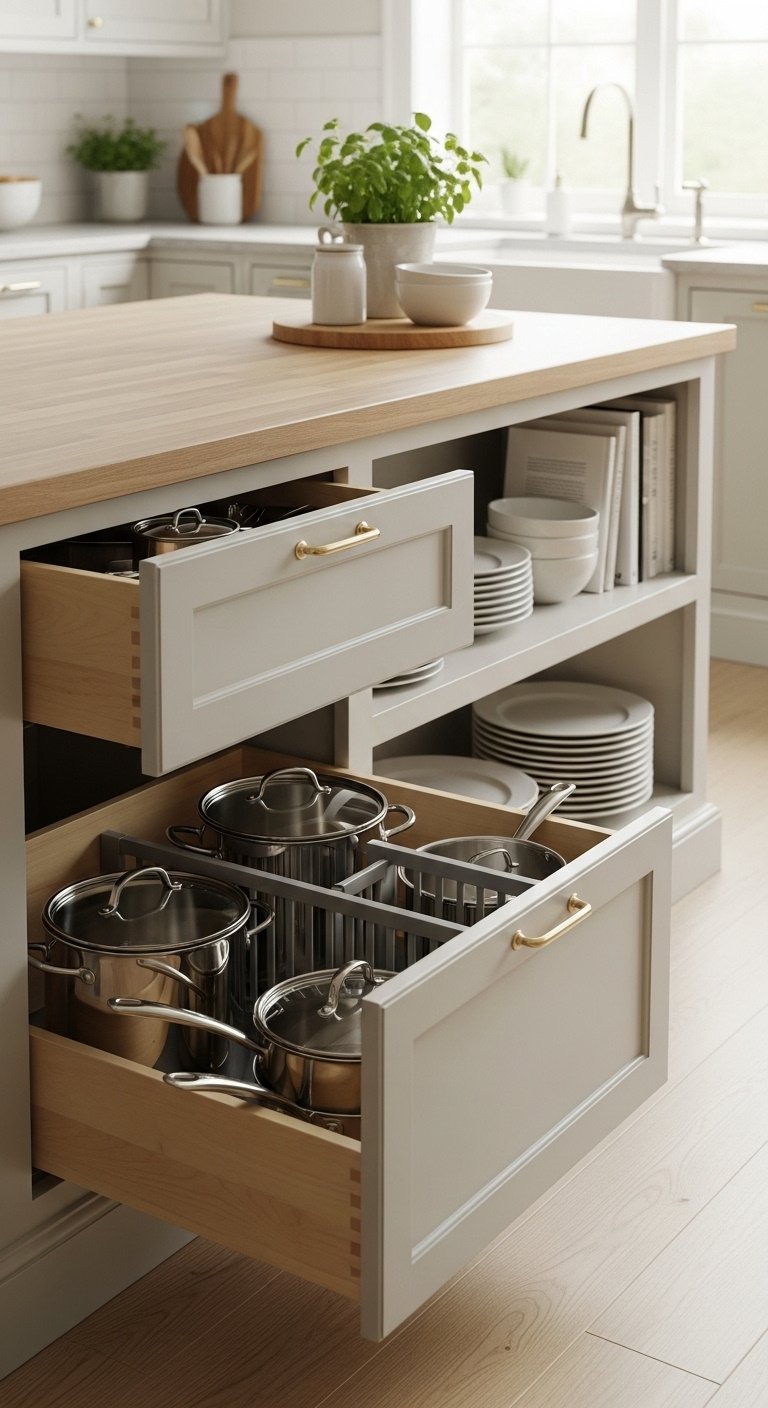
Get organized! Save this storage solution to your ‘Home Organization’ board.
7. The Double Island Dream
The double island dream layout features two parallel kitchen islands in a single, very large kitchen space, dedicating one to intensive prep and cooking tasks and the other to seating, serving, or casual dining. This luxurious configuration is ideal for expansive kitchens, allowing for a clear separation of functions and creating distinct zones for serious culinary work and comfortable social interaction, often found in grand, high-end homes.
Materials Needed:
* Sufficient kitchen square footage (this is paramount)
* Double the cabinetry and countertop material for two distinct islands
* Any desired integrated appliances for the “work” island
Step-by-Step Directions:
1. Assess Your Space: This grand layout is unequivocally only for very large kitchens. You absolutely need to ensure at least 42-48 inches of clearance around each island, as well as between the two islands, to maintain comfortable traffic flow and allow appliance doors to open fully.
2. Assign Roles: Clearly designate one island as the primary “work” island. This is where you’d typically integrate a prep sink, perhaps a cooktop, and all the necessary storage for cookware, utensils, and spices. It’s the engine room of your kitchen.
3. Design the “Social” Island: The second island should be designed as the “social” or “clean” island. This surface remains clear for serving appetizers, seating guests, or even acting as a homework station. Consider a beautiful material like a marble waterfall edge or a unique wood top to make it a true aesthetic centerpiece.
4. Maintain Cohesion: While the two islands can certainly feature different materials or colors to delineate their functions, they should always relate to each other and the perimeter cabinets stylistically. This ensures the entire kitchen feels like a cohesive, well-designed space rather than two disconnected pieces.
Pro-Tip: To maintain an efficient work triangle, position the “work” island parallel to your main sink and refrigerator wall. This strategic placement minimizes steps during meal preparation. The “social” island can then be positioned to bridge the space between the kitchen and the living area, acting as a natural transition point in an open-concept home.
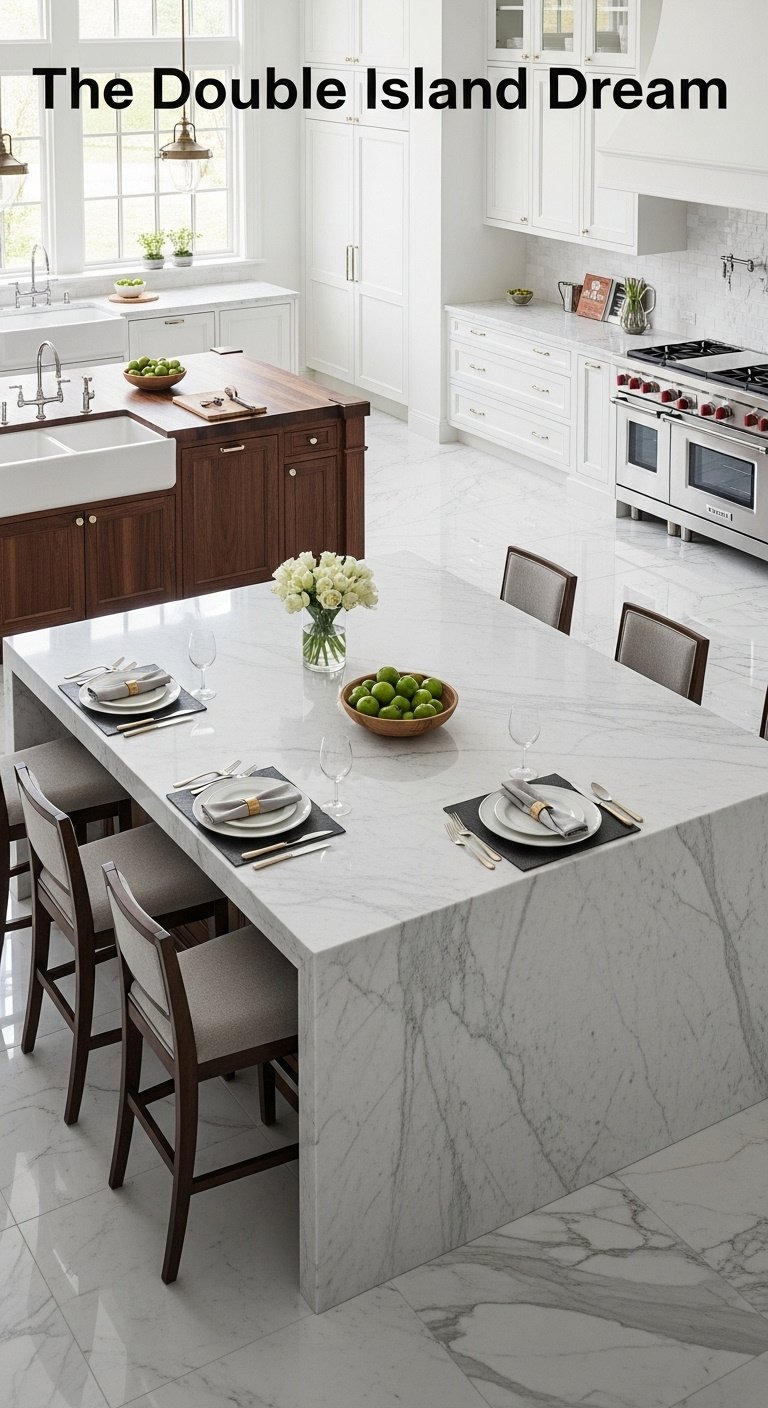
Dreaming big? Pin this luxury layout to your ‘Future Home’ board!
8. The Smart Mobile Island
A smart mobile island is a freestanding kitchen cart or small island equipped with heavy-duty locking caster wheels, offering unparalleled flexibility and a space-saving solution for smaller kitchens or dynamic households. This adaptable piece can be easily moved to where it’s needed most—for extra prep space, a temporary serving station, or tucked away when more floor space is required—making it an ideal renter-friendly option or a versatile addition to any home.
Materials Needed:
* A small freestanding island, sturdy kitchen cart, or small cabinet base
* Heavy-duty locking casters (4 per island, minimum 3-inch diameter recommended)
* Drill and appropriate screws for casters
* (Optional) Piece of plywood for base reinforcement
* (Optional) Butcher block or remnant stone piece for the top
Step-by-Step Directions:
1. Choose a Sturdy Base: Select a small, robust worktable, a durable kitchen cart (like the popular IKEA FÖRHÖJA or a similar model), or a compact cabinet base. Ensure it’s made from solid wood or metal for longevity.
2. Reinforce if Needed: If your chosen base is lightweight or has a thinner bottom panel, consider adding a piece of plywood to the underside. Secure it with screws to create a more stable and robust surface for attaching the casters.
3. Attach Locking Casters: Flip the base upside down. Drill pilot holes in each corner (or designated mounting points). Securely screw on heavy-duty locking casters. The “locking” feature is absolutely essential to prevent the island from rolling away during active use, ensuring safety and stability.
4. Add a Durable Top (Optional): If your chosen base doesn’t come with a suitable countertop, enhance its functionality and aesthetics by adding a durable top. A butcher block is a popular choice, or a remnant piece of stone can add a high-end feel. Secure the new top firmly from underneath with screws to prevent shifting.
Lesson Learned: When selecting casters for a mobile island, opt for wheels that are at least 3 inches in diameter. Smaller wheels can easily get caught on grout lines, transitions between flooring types, or the edges of rugs, making the island frustratingly difficult to move smoothly. Larger wheels offer superior maneuverability.
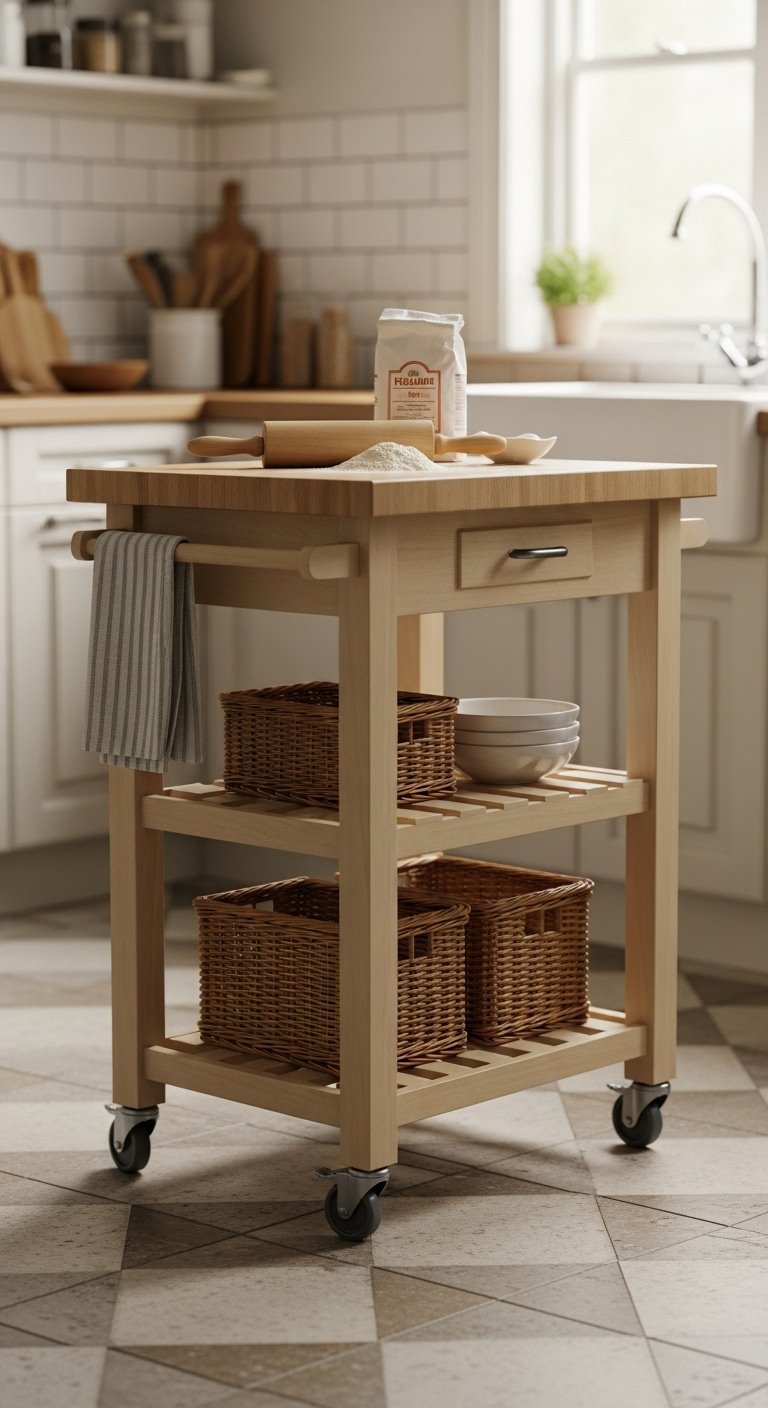
Perfect for small spaces! Save this flexible idea to your ‘Small Kitchen Solutions’ board.
9. The Warm & Rustic Butcher Block
A warm and rustic butcher block kitchen island features a solid wood countertop made from thick, often end-grain, wood planks, bringing natural warmth, durability, and a classic farmhouse or rustic charm to the kitchen. This type of island is not only aesthetically inviting but also highly functional, offering a food-safe surface that can be used directly for chopping and food preparation, making it a favorite for avid home cooks.
Materials Needed:
* Butcher block countertop (pre-fabricated or custom-made)
* Food-safe mineral oil or specialized wood conditioner
* Fine-grit sandpaper (220 grit)
* Clean, lint-free cloths
* (Optional) Wood glue and clamps for initial installation if assembling pieces
Step-by-Step Directions:
1. Choose Your Wood: Maple is a classic and exceptionally durable choice, known for its light color and resistance to knife marks. Walnut offers a richer, darker look and a slightly softer surface. Consider the grain: edge grain is durable, while end grain (where wood fibers run vertically) is the most knife-friendly and resilient for heavy chopping.
2. Initial Sanding: Even if your butcher block is new, lightly sand the entire surface with 220-grit sandpaper, always moving with the grain. This opens the wood pores for better oil absorption and ensures a perfectly smooth finish. Wipe away all dust thoroughly with a clean, dry, lint-free cloth.
3. Apply Oil: Apply a generous amount of food-safe mineral oil or butcher block conditioner. Spread it evenly over the entire surface. Let the oil soak into the wood for at least 20-30 minutes, or even overnight for the very first coat on a new block, allowing for deep penetration.
4. Buff and Repeat: Wipe away any excess oil with a clean cloth. For a new countertop, repeat this oiling process daily for the first week, then weekly for the first month, and finally monthly for ongoing maintenance. This frequent oiling is crucial to prevent the wood from drying out, cracking, and maintaining its natural beauty and antibacterial properties.
Pro-Tip: A butcher block top is naturally antibacterial when properly maintained with regular oiling, making it a hygienic surface for food prep. Furthermore, any light scratches, knife marks, or minor stains can be easily sanded away and re-oiled, allowing your butcher block to be renewed and look fresh for decades to come, unlike many other countertop materials.
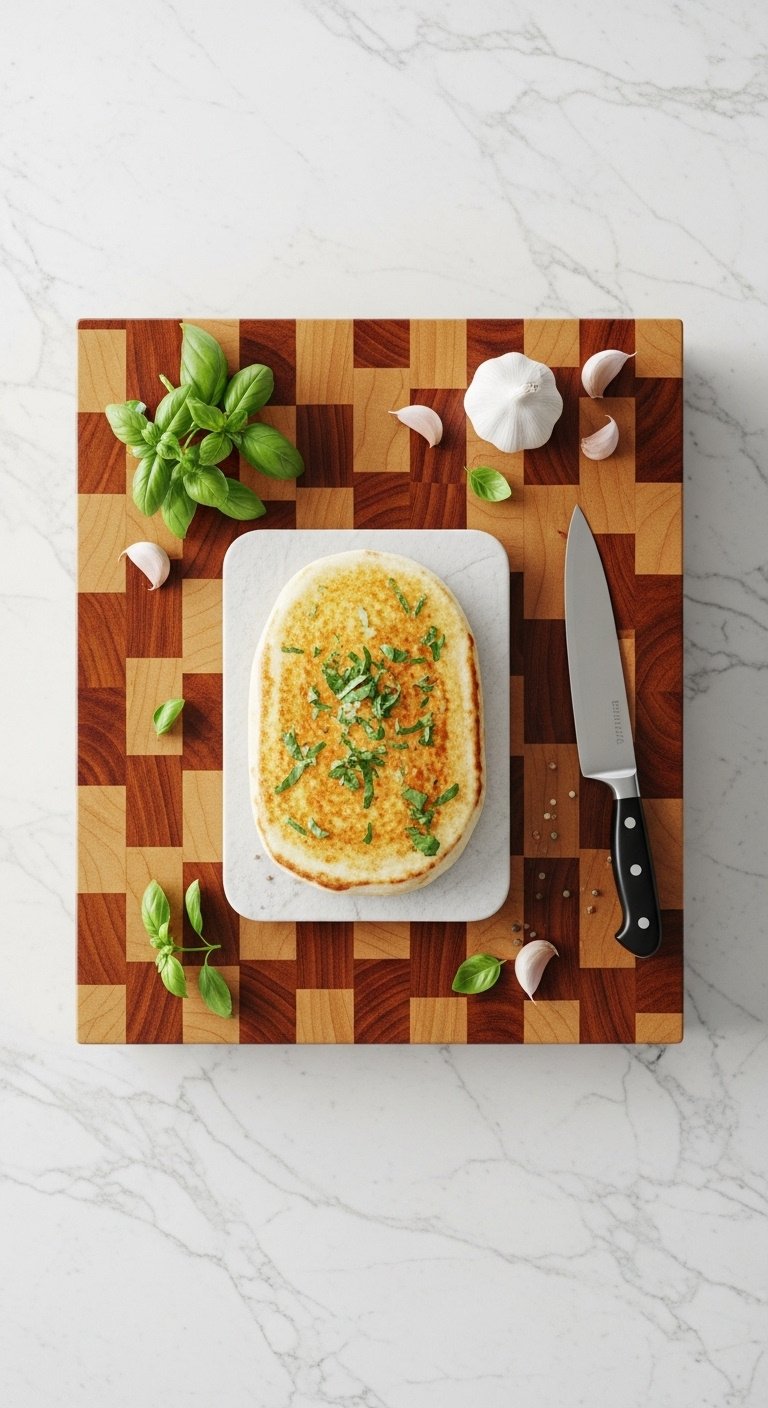
Add some warmth! Pin this rustic look to your ‘Farmhouse Kitchen’ board.
10. The Character-Filled Repurposed Piece
A character-filled repurposed kitchen island is created by transforming a unique piece of vintage or antique furniture, such as a dresser, console table, or industrial workbench, into a one-of-a-kind kitchen centerpiece. This approach injects instant charm, history, and unparalleled personality into your kitchen, providing both functional workspace and storage while telling a story that mass-produced islands simply cannot.
Materials Needed:
* Sturdy vintage furniture piece (e.g., antique dresser, industrial worktable, library console)
* Sandpaper (various grits)
* Paint, stain, or sealer (appropriate for wood)
* New countertop material (optional: stone, metal, butcher block)
* Wood braces and screws for internal reinforcement
* Strong adhesive (if attaching a new top)
Step-by-Step Directions:
1. Find the Right Piece: Start your treasure hunt! Look for a piece that is inherently sturdy and ideally close to counter-height (around 34-36 inches tall). Antique dressers with multiple drawers, robust industrial workbenches, or long, narrow library console tables often make excellent candidates due to their solid construction.
2. Reinforce the Structure: Even if a piece looks sturdy, it’s wise to add internal reinforcement, especially if you plan to add a heavy new countertop. Install wood braces inside the frame or underneath the top to ensure it can safely support the added weight and withstand the daily rigors of kitchen use.
3. Refinish the Base: Thoroughly sand the entire piece to remove old finishes and create a smooth surface. Then, prime and paint or stain it to either complement your kitchen’s existing aesthetic or to create a bold, contrasting statement. Consider distressing the paint lightly for an authentic vintage look.
4. Add a New Top (Optional but Recommended): You can clean and seal the existing top if it’s in good condition. However, for increased durability, hygiene, and a more integrated feel, have a custom piece of stone, metal, or butcher block cut to fit perfectly over the original top. Secure this new surface from underneath with screws and strong adhesive, ensuring an overhang if you desire seating.
Lesson Learned: Before you commit to purchasing a vintage piece to repurpose, give it a good, vigorous shake at the antique store or flea market. It is exponentially easier to reinforce a piece that is fundamentally sturdy but just needs a little extra support than it is to try and salvage one that is inherently wobbly or has structural integrity issues from the outset. Trust me on this one!
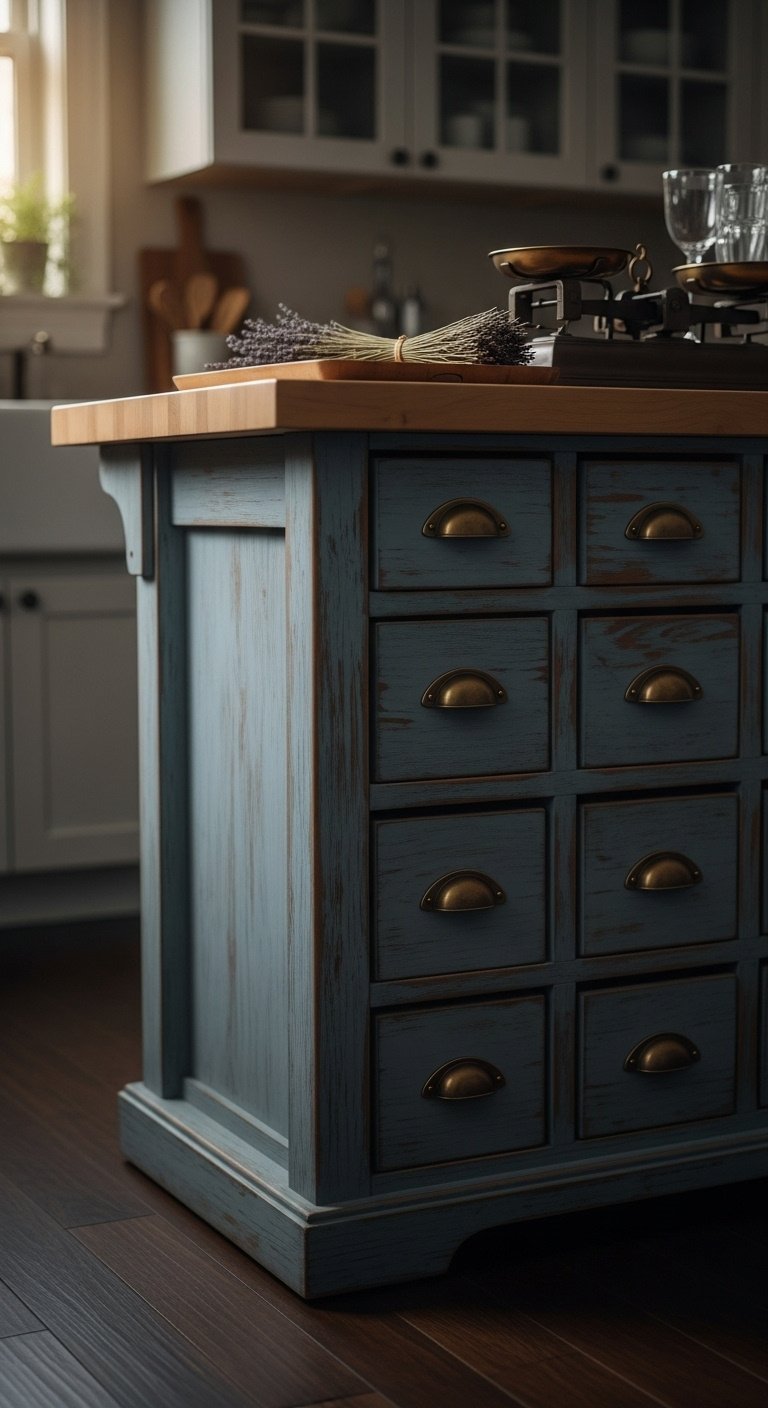
One of a kind! Save this unique idea to your ‘DIY Home’ board.
11. The Seamless Integrated Dining Table
A seamless integrated dining table island design combines the functionality of a kitchen island with a dedicated dining space by extending one end of the island to a lower, table-height surface, perfect for open-concept homes. This hybrid solution maximizes space and creates a fluid transition between food preparation and dining, fostering a more connected social environment where cooking and eating can happen in close proximity without feeling cramped or disjointed.
Materials Needed:
* Counter-height cabinetry for the main island base
* Table-height legs, a trestle base, or a sturdy supporting pony wall for the dining section
* Continuous countertop material (for a truly seamless look) or a contrasting piece for the table portion
* Appropriate fasteners and construction adhesive
Step-by-Step Directions:
1. Plan the Transition: Carefully decide how the two pieces will connect. The dining table can extend directly off the end of the main island in a linear fashion, or it can run perpendicularly (creating a T-shape or L-shape) for a more defined dining zone.
2. Drop the Height: The island portion should maintain the standard counter height of 36 inches for ergonomic food preparation. Crucially, the dining table portion should drop to a standard table height, typically between 28-30 inches, to comfortably accommodate regular dining chairs, making it distinct from bar-height seating.
3. Choose Materials: For the most visually seamless and modern look, use the exact same countertop material (e.g., quartz, marble) for both the island and the attached table. If you desire a more visually defined separation, consider using stone for the island and a warm, contrasting wood for the attached table section.
4. Ensure Proper Support: Since the table portion will not have cabinetry underneath, it requires robust and aesthetically pleasing support. This can involve sturdy, custom-fabricated table legs, a solid trestle base, or an architecturally integrated pony wall that extends from the island’s structure, ensuring stability and safety.
Pro-Tip: For optimal social dynamics, a T-shaped configuration, where the dining table extends perpendicularly from the center or end of the main island, often creates a more inviting atmosphere than a long, linear extension. This allows diners to face each other more easily, promoting better conversation and a more engaging shared meal experience.

The ultimate combo! Pin this smart design to your ‘Open Concept Living’ board.
Key Takeaways: Your Quick Guide to kitchen island ideas
Choosing the perfect kitchen island can truly transform your home, balancing aesthetic appeal with practical necessity. Here’s a quick recap of the most important considerations to guide your decision:
- Function First: Before you even consider the aesthetics, clearly define the primary purpose of your island. Will it be a dedicated prep zone, a casual dining spot, a storage powerhouse, or a combination of all three? This clarity will inform all subsequent design choices.
- Mind the Gap: The single most crucial rule for a functional kitchen island is adequate clearance. Always ensure you have at least 36-42 inches of open space on all sides of the island. This guarantees comfortable movement, safe workflow, and easy access to cabinets and appliances.
- Go for Drawers: When it comes to base cabinet storage within an island, prioritize deep drawers over standard cupboards. They are significantly more ergonomic and efficient, allowing you to easily see and access everything without bending or rummaging.
- Light it Right: Thoughtful lighting is non-negotiable. Layer your lighting with good task lighting (like strategically placed pendant lights) for functionality, combined with ambient lighting to set the mood. Always install a dimmer switch for maximum flexibility.
- Don’t Fear Contrast: For a truly impactful design, don’t shy away from using a different color, material, or finish for your island compared to your perimeter cabinets. This is a designer-approved technique to create a beautiful focal point and add depth and interest to your kitchen.
People Also Ask About kitchen island ideas
What trend is replacing kitchen islands?
While traditional built-in kitchen islands remain incredibly popular, a growing trend for 2024, especially in classic or collected spaces, is the return of the freestanding “worktable.” These are often antique or custom-made tables that provide flexible workspace and character without the permanent fixture of a built-in island, creating a more furnished and unfitted look in the kitchen.
What are the rules for kitchen islands?
The most critical rules for kitchen islands involve spacing and proportion. You must have a minimum of 36-42 inches of clearance around the island for safe and comfortable movement. The island itself should be proportional to the room’s size, ideally taking up no more than 10% of the kitchen’s total square footage, and it should never obstruct the primary work triangle between the sink, stove, and refrigerator.
What are some unique kitchen island ideas?
Unique kitchen island ideas move beyond the conventional rectangular shape and standard materials. Consider designing a curved or irregularly shaped island to improve traffic flow and add visual interest, repurpose a vintage piece like an antique apothecary cabinet for one-of-a-kind character, or create a multi-level island with contrasting materials like sleek stone and warm wood to clearly define distinct zones for prepping and socializing.
Final Thoughts
Your kitchen island is far more than just a piece of furniture; it’s the future hub of your home’s activity, the stage for countless memories, and a reflection of your personal style. By carefully balancing beautiful design with thoughtful function, you can create a centerpiece that you’ll adore for years to come. Whether you opt for a sleek waterfall edge or a charming repurposed antique, remember that the best island is the one that perfectly fits your lifestyle and makes your kitchen truly yours. What’s the one feature you absolutely must have in your dream kitchen island? Let us know in the comments below!
